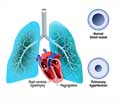The tool can assess the 30-day mortality risk of patients admitted to the emergency department with acute heart failure.

Although decision making in the emergency department is critically important, emergency physicians currently do not stratify patients by risk group (low risk, intermediate risk, high risk, and very high risk). While several acute heart failure risk scores are available, a more reliable tool is needed.
Researchers for the Spanish Ministry of Health sought to predict mortality from heart failure using data from an established registry comprised of 34 Spanish emergency departments with diverse patient and facility characteristics.
To create the prediction tool model, the researchers chose 13 prognostic variables and tested them against outcomes in a cohort of 4,867 consecutive emergency department patients admitted during 2009 to 2011. Then, the outcomes were tested again in an independent validation population of 3,229 patients gathered 3 years later from the same emergency departments.
All of the variables chosen are readily available and familiar, except for one, and an online calculator was developed to make the tool easy for physicians to use.
The tool proved to be very accurate for predicting mortality risk, especially for the 10 percent of patients at very high risk (around 45 percent) for death at 30 days and in the 40 percent of patients at low risk (less than 2 percent). Identification of both groups has important management implications.
Advertisement















